The washing machine door does not close tightly
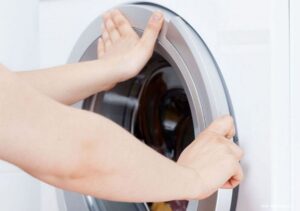 When the washing machine door doesn't close tightly, you won't be able to do the laundry. The hatch simply will not lock until it clicks - the electronic lock will not work, the board will not start the cycle and will display an error code on the display. There is another option: the wash will start, but water will flow out from under the glass almost immediately. It is forbidden to wash with a leaky drum - there is a high risk of flooding and short circuits. It’s better not to take risks, and at the first “symptoms”, start searching for and eliminating the cause of the problem.
When the washing machine door doesn't close tightly, you won't be able to do the laundry. The hatch simply will not lock until it clicks - the electronic lock will not work, the board will not start the cycle and will display an error code on the display. There is another option: the wash will start, but water will flow out from under the glass almost immediately. It is forbidden to wash with a leaky drum - there is a high risk of flooding and short circuits. It’s better not to take risks, and at the first “symptoms”, start searching for and eliminating the cause of the problem.
Checking the mechanics
If the door on your washing machine cannot close tightly, there is a mechanical problem. In simple words, the locking components cannot be fixed in the provided grooves: the hatch has sagged, the lock itself or some of its elements have broken. This happens for a number of reasons:
- natural wear and tear of the locking mechanism parts;
- inaccurate operation of the machine (sharp slamming of the hatch, pressure on the door, etc.);
- manufacturing defect.
To understand the nature of the malfunction, it is necessary to evaluate the “symptoms”. First, let's look at why the drum doesn't close tightly. There are two options: either the door does not fit into the grooves, or the lock does not work. In the first case, everything indicates that the hatch is skewed. More precisely, the side hinges are sagging, and the locking “tongue” is not fixed in the intended hole. The problem is corrected by leveling the position of the sash with a building level and tightening the fasteners.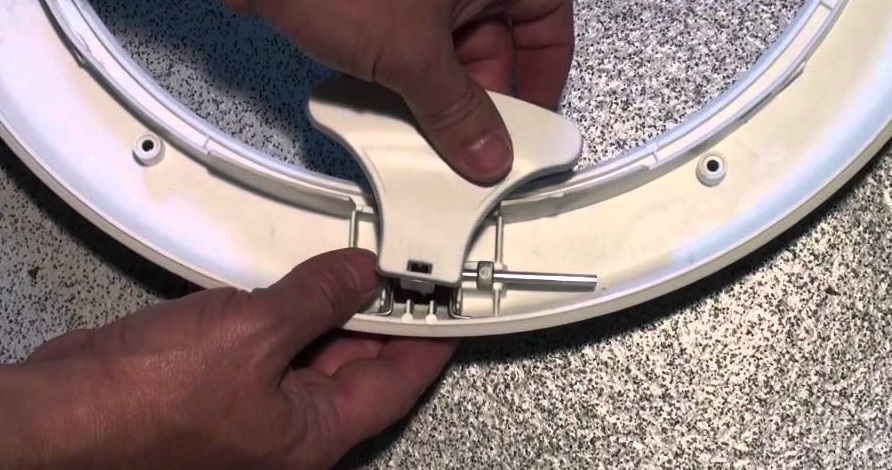
If the hinges are tightened, but the washer still does not close, then the reason is that the locking tab is misaligned. Most likely, the metal rod that secures the element in a certain position has fallen out and the rod has dropped below the required level.To return the fasteners to the right place, you will have to disassemble the door, find the lock and return all the elements to their original “position”. Sometimes local repairs do not help and you have to completely replace the door handle.
Modern washing machines do not start with the door open - the cycle is delayed and a system error code is displayed on the screen.
There is a third outcome: the door fits into the grooves and locks, but without a click. The absence of the latter indicates a breakdown of the guide - a thin plastic plate. It is this part that is fixed in the groove last and clicks. The absence of sounds will indicate that the hatch has not been blocked:
- the plastic “hook” has worn out, broken or sagged;
- due to misalignment, the guide did not fit into the intended groove;
- the door did not close tightly.
You cannot start the wash without a click: the board will cancel the program, or a leak will occur when the tank is filled. The guide cannot be repaired - only replaced with a new one.
The lock doesn't work well
Often problems arise not with mechanics, but with electronics. The first click is heard clearly, but the second, slightly muffled, is not heard. At the same time, the error identifier “dE” appears on the screen. The wash does not start - the appliance does not respond to pressing the start key. The reason for this behavior of the machine is a broken UBL.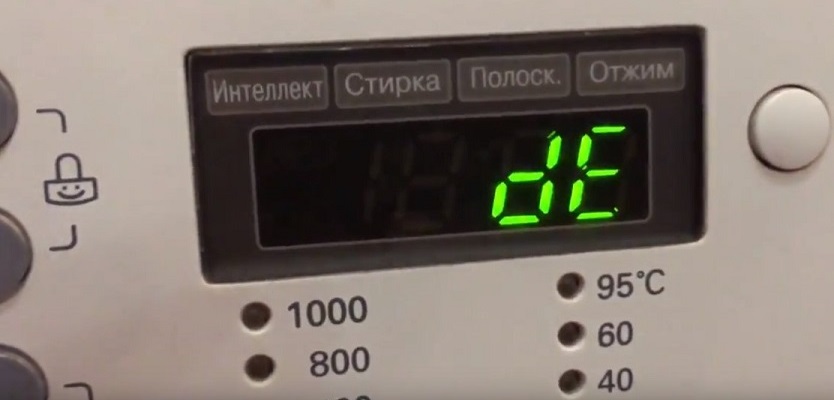
The activation of the UBL is considered a necessary safety measure that protects the user from accidental opening of the drum during the washing process. Thanks to it, double protection of equipment is provided. If the hatch does not close hermetically, the lock is not activated and the cycle does not start.
The electronic lock is not activated if the part is worn out or clogged, as well as if there is a problem with the control board of the washing machine.
Often the electronic locking is triggered not because of the open door, but because of the UBL itself. The device fails for a number of reasons: from wear of components to a malfunction of the control board.
- Natural wear and tear. UBL consists of bimetallic plates, which wear out during operation and cease to conduct electric current. It is impossible to restore the elements, only to replace the blocker completely.
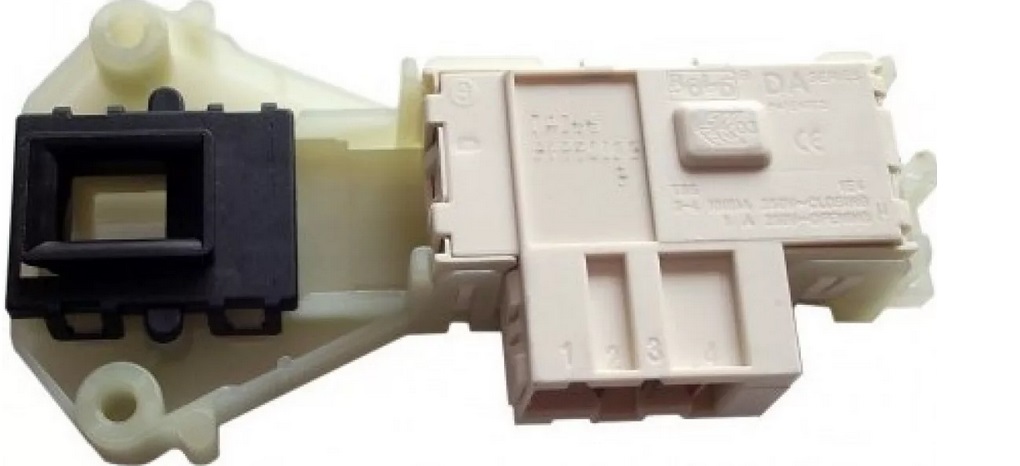
- Blockage. The locking device is a leaky part, so when operating the machine, debris often penetrates into it: dust and lint. A clogged UBL works intermittently, as its response to current slows down. The malfunction is eliminated by disassembling the part, its subsequent cleaning and reassembly.
- Faulty board. The worst thing is when the UBL does not work due to a lost connection with the electronic unit. The connected elements on the module leading to the track part or receiving information from the microcircuit are damaged. Sometimes there are problems with the firmware. To repair it, you will need to test the board for serviceability, reconfigure it or change it completely.
If the UBL stops working due to wear or blockage, then you can fix it yourself at home. If the control board breaks down, it is recommended not to take risks and contact service. The electronic module is an extremely sensitive and complex system, the diagnosis of which should only be carried out by professionals and using special equipment. Any careless movement can irrevocably damage the part, and a new unit costs at least half the price of the washing machine itself.
Testing and replacing a broken lock
In most situations, you can deal with UBL on your own. But first you should make sure that the device is faulty.To do this, the blocker must be dismantled and tested. We proceed in the following order.
- Disconnect the washing machine from the power supply and water supply.
- We open the door. As a rule, a failure with the UBL occurs after it is triggered, so the hatch is initially locked. To open the drum, you need to unclip the lower false panel, tilt the washer to the left and, sticking your hand into the hole, try to move the locking latch. You can also get to the blocker from above: remove the cover and tilt the equipment back.
- We remove the hatch cuff. All you have to do is find the clamp and loosen it, and then insert the rubber band into the drum.
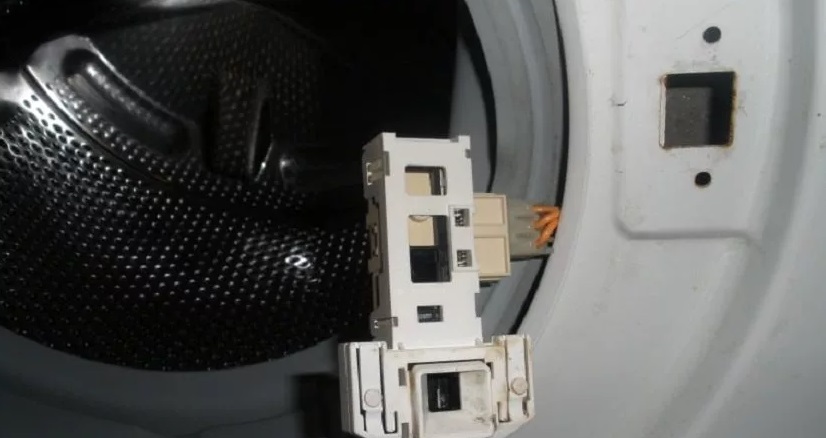
- We unscrew the bolts holding the locking mechanism.
It is recommended to record all manipulations for dismantling the UBL in a photo or video to avoid errors during reassembly.
- Disconnect the connected wires.
- We take out the lock.
The removed UBL is tested for performance. First, it is recommended to carefully study the factory instructions for the washer, or more precisely, the section devoted to the electrical circuit of the lock. Then we turn on the multimeter to the “Resistance” position, hook the alligator clips to “zero” and “phase”, and then look at the indicators of the device. If the tester shows a three-digit number, then the blocker is working. Other numbers will indicate that the part is broken. Next, we move the probes to the common relay and the zero contact. With “0” and “1” there is no reason to worry; with other values, we change the device to a new one.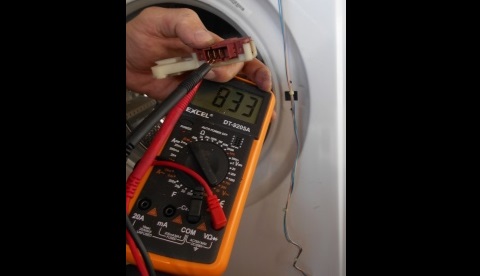
UBL is considered non-repairable - it is much cheaper and easier to buy a new one. Devices are sold cheaply, the main thing is to tell the seller the serial number of the washing machine. It is advisable to look only at branded analogues, avoiding Chinese counterfeits.
Installing a new UBL is quite simple.You need to connect the wires, secure the lock in the grooves, tighten the cuff, fix the clamp and start the wash. If the door “seizes” with two clicks, it means it’s done correctly.
The rubber band of the hatch is damaged
It’s another matter if the washing machine door does not close tightly, not providing the required tightness. So, more often a leak occurs due to damage to the cuff - a rubber seal stretched over the drum. With prolonged use, the rubber wears out and breaks, and water begins to seep out through cracks and holes.
It is important to make sure that it is pouring from under the drum. The powder receptacle often leaks: water in small streams goes around the washer's dashboard, down to the hatch and creates the appearance that the problem is in the door with the cuff.
The new cuff is selected according to the serial number of the washing machine.
If the reason is in the cuff, then you should carefully examine it. First of all, we look for chips, holes and cracks, especially if the water runs strongly. Afterwards, we probe the surface of the elastic for the presence of “waves” and hard spots. A seal that is too hard and wavy is also not able to ensure the tightness of the tank. The damaged cuff is replaced with a new one:
- the machine is disconnected from communications;
- the hatch opens;
- the outer clamp is loosened and removed (first hooked with a screwdriver, and then unscrewed with pliers);
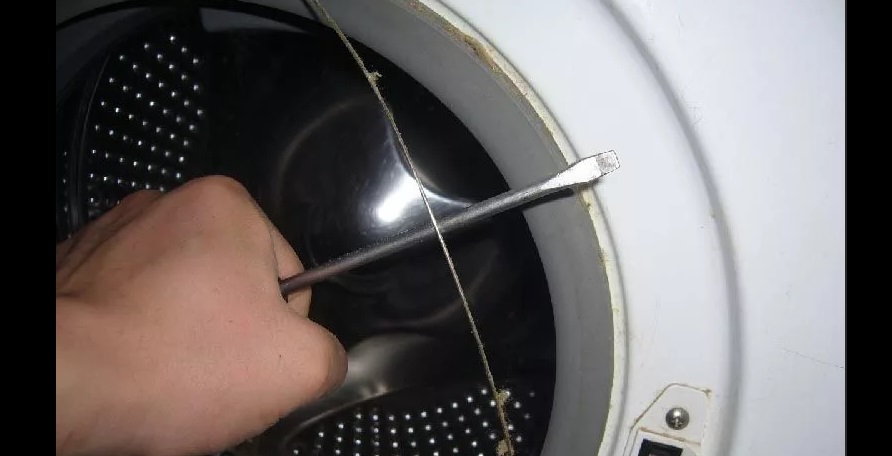
- the inner clamp is unscrewed;
- The elastic band is tightened.
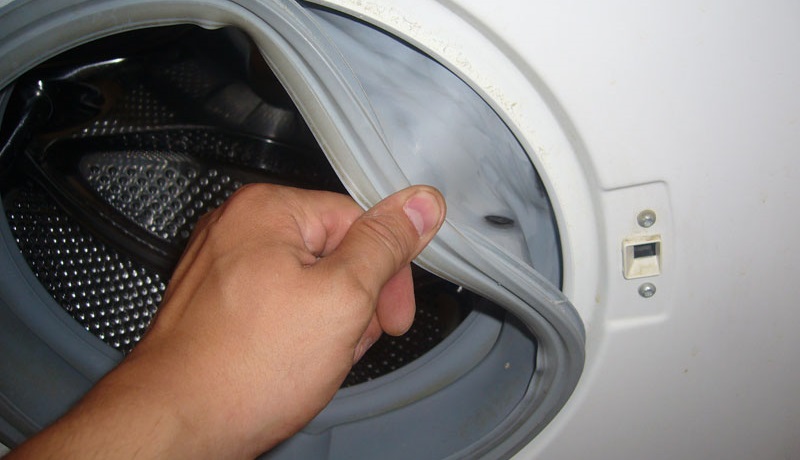
You can handle the replacement yourself. The main thing is to act consistently and carefully. But you should be prepared for difficulties - the elastic band is difficult to stretch onto the drum. It's better to get an assistant.
Often the cuff leaks not due to damage. Often the problem is an object stuck between the door and the body - laundry or garbage.It is advisable to first carefully inspect the rubber band, put things in the drum and clean the seal.
Interesting:
Reader comments
- Share your opinion - leave a comment

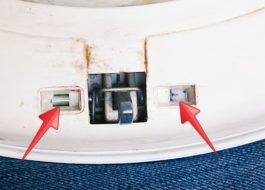
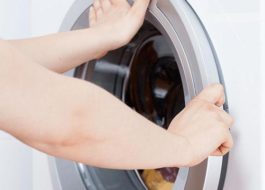

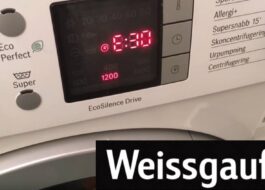
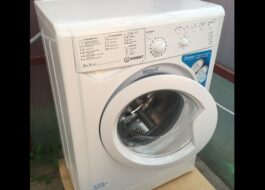














Add a comment